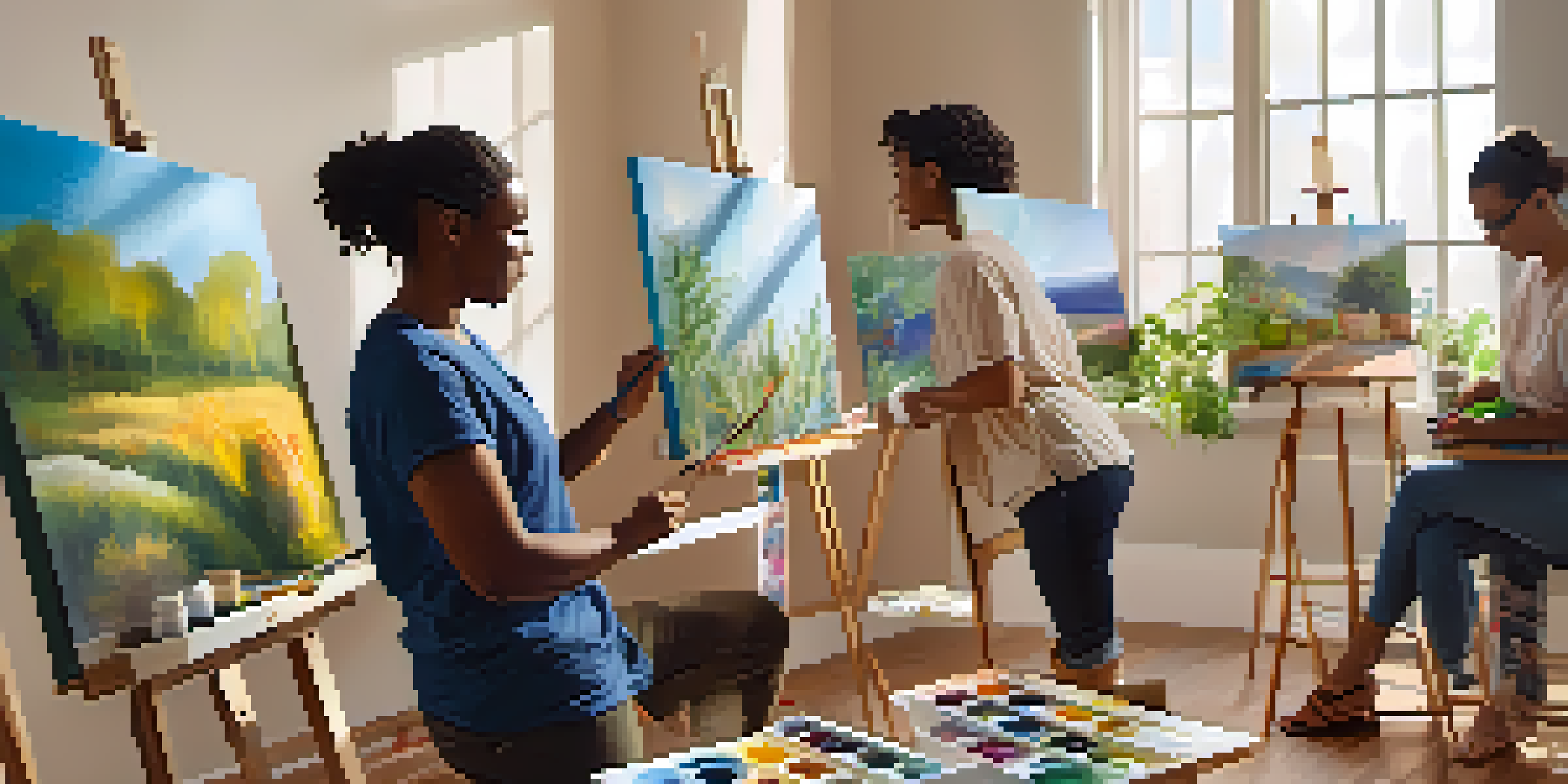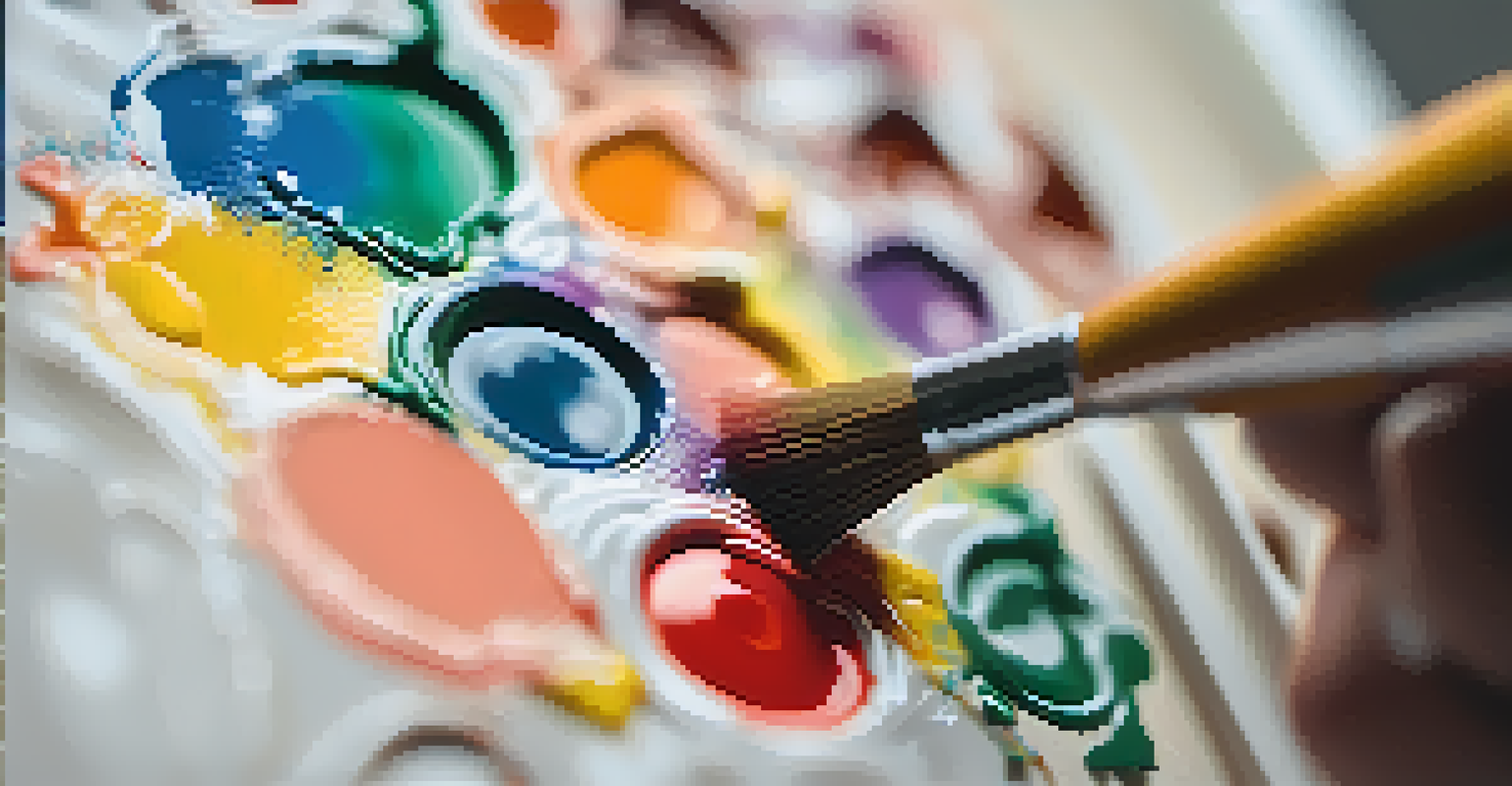The Influence of Art on Post-Traumatic Growth in Individuals

Understanding Post-Traumatic Growth and Its Importance
Post-traumatic growth (PTG) refers to the positive psychological changes that can occur after experiencing traumatic events. While trauma can be deeply distressing, many individuals find that they emerge stronger and more resilient. This phenomenon highlights the potential for personal development, suggesting that adversity can sometimes lead to profound transformation.
Out of your vulnerabilities will come your strength.
PTG often manifests in various ways, such as improved relationships, a greater appreciation for life, and increased personal strength. It’s not about dismissing the pain of trauma; rather, it’s about recognizing that healing can lead to unexpected benefits. Understanding PTG encourages individuals to seek out ways to foster this growth, making it a vital concept in trauma recovery.
Art plays a significant role in this process by providing a medium through which individuals can express their pain and experiences. By engaging with art, whether through creation or appreciation, people can start to make sense of their trauma. This connection between art and PTG opens doors to healing that may not have been accessible otherwise.
The Therapeutic Power of Artistic Expression
Artistic expression serves as a powerful tool for individuals processing trauma. Creating art allows for the exploration of feelings that might be difficult to articulate verbally. Through painting, drawing, or writing, individuals can externalize their emotions, providing a sense of relief and understanding.

This form of expression can also serve as a bridge to connect with others who have shared similar experiences. When individuals share their art, it fosters community and support, helping to combat feelings of isolation. This connection can be invaluable in the journey toward healing and growth.
Post-Traumatic Growth Explained
Post-traumatic growth (PTG) highlights how individuals can emerge stronger and more resilient after experiencing trauma.
Moreover, engaging in the creative process can promote mindfulness, anchoring individuals in the present moment. This focus can help alleviate anxiety and stress associated with past trauma, allowing for a more profound sense of peace and clarity. The therapeutic benefits of artistic expression are vast, paving the way for PTG.
Art as a Catalyst for Reflection and Insight
Engaging with art encourages reflection, which is crucial for processing trauma. Viewing or creating art can prompt individuals to confront difficult emotions and thoughts. This reflective process can lead to insights that facilitate understanding and acceptance of their experiences.
Art is the most beautiful of all lies; we are the most truthful of all truths.
For instance, a person might create a piece that symbolizes their journey through grief, allowing them to visually explore their emotions. This act of reflection can illuminate feelings they may not have fully acknowledged, fostering a deeper connection with their healing journey. As they gain insights, individuals can begin to reframe their narratives, seeing their trauma as part of their growth.
Additionally, this reflective engagement with art can inspire hope and motivation for the future. By recognizing their strengths and resilience through the lens of art, individuals can cultivate a more positive outlook. This shift in perspective is a vital aspect of post-traumatic growth.
The Role of Community in Artistic Healing
Community support plays a crucial role in the healing process for trauma survivors. Art can be a communal experience, allowing individuals to share their stories and connect with others through creativity. Group art therapy sessions, for example, provide a safe space for individuals to express themselves collectively, fostering a sense of belonging.
Such communal experiences can enhance the healing journey by reinforcing the idea that no one is alone in their struggles. When individuals see others sharing their experiences through art, it can validate their feelings and encourage them to open up. This shared vulnerability can create strong bonds and support networks.
Art Enhances Healing Process
Engaging with art facilitates emotional expression and reflection, serving as a powerful tool in the journey toward healing.
Involvement in community art projects can also empower individuals, giving them a sense of purpose and agency. By contributing to a larger work of art or participating in exhibitions, individuals can reclaim their narratives and share their journeys with the world. This collective process can be vital for fostering PTG.
Art Therapy: A Structured Approach to Healing
Art therapy is a structured therapeutic approach that combines psychology and art to facilitate healing. Certified art therapists guide individuals through creative processes, helping them explore emotions and experiences related to trauma. This professional guidance can make the healing journey more effective and meaningful.
In art therapy sessions, individuals are encouraged to express themselves freely, often leading to breakthroughs in understanding their trauma. The therapist acts as a facilitator, providing support and insight as individuals navigate their feelings. This structured environment can help individuals feel safe as they explore complex emotions.
Research has shown that art therapy can significantly reduce symptoms of anxiety and depression, making it a valuable tool for those experiencing trauma. By integrating creative expression with therapeutic techniques, art therapy promotes PTG and helps individuals rebuild their lives.
The Impact of Visual Arts on Emotional Resilience
Visual arts, such as painting and sculpture, have a unique ability to evoke emotions and stimulate healing. These forms of art can serve as visual metaphors for trauma, helping individuals to express feelings that might be challenging to verbalize. By interacting with visual artworks, individuals can confront their trauma in a tangible manner.
Additionally, the act of creating visual art can foster emotional resilience. As individuals engage in the creative process, they often discover new coping mechanisms and ways to manage their feelings. This resilience can be essential in the aftermath of trauma, allowing individuals to bounce back and thrive.
Community Support is Vital
Community involvement in artistic endeavors fosters connection and shared vulnerability, which are crucial for trauma recovery.
Furthermore, visual arts can create a lasting impact on memory and identity. As individuals create or engage with art, they can redefine their experiences and integrate them into their personal narratives. This process of redefinition can be empowering, reinforcing their journey toward PTG.
Literature and Storytelling as Healing Tools
Literature, including poetry and prose, serves as a powerful medium for healing and growth. Writing about traumatic experiences can provide individuals with an outlet for their emotions, allowing for catharsis and relief. Storytelling, in particular, enables individuals to make sense of their experiences by framing them within a narrative structure.
Many find that reading stories of others who have faced similar challenges offers comfort and connection. Literature can provide validation, showing individuals that they are not alone in their struggles. This connection to others through shared stories can foster a sense of hope and resilience.

Moreover, the act of storytelling can facilitate personal growth by encouraging individuals to reflect on their journeys. As they write or share their stories, they can identify patterns, strengths, and insights that contribute to their healing. This narrative exploration plays a crucial role in fostering post-traumatic growth.